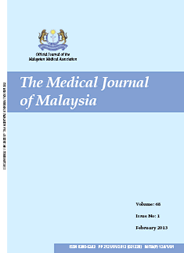MJM, Vol 70 Supplement 1 September 2015
Fatty liver: more than just ectopic
fat
Occupational and Environmental Medicine, Kangbuk Samsung Hospital, Sungkyunkwan University, Korea
ABSTRACT
Non-alcoholic fatty liver disease (NAFLD) encompasses a spectrum of pathological conditions, ranging from simple steatosis to non-alcoholic steatohepatitis (NASH) and cirrhosis, in the absence of excessive alcohol consumption. In addition to its potential liver complications, the importance of NAFLD as a cardiovascular risk factor is being increasingly recognised. Concurrent with the increasing prevalence of obesity, NAFLD has become a growing problem. Epidemiologic approaches to identify possible risk factors for NAFLD are necessary to develop preventive strategies for this disease. Kangbuk Samsung Total Healthcare Center is the largest and oldest health check-up centre as well as the largest occupational health check-up centre in Korea, resulting that assessment of fatty liver based on ultrasound is available in almost all participants. Using the already existing infrastructure of health check-up centres, two Kangbuk Samsung cohort studies have been established.
NAFLD is strongly associated with features of the metabolic syndrome, including abdominal obesity, insulin resistance, dysglycemia and atherogenic dyslipidemia, which are all established risk factors for cardiovascular disease (CVD). NAFLD is also associated with other emerging and non-traditional CVD risk factors and this association was observed in our studies. Moreover, studies showed an association of NAFLD with markers of subclinical atherosclerosis as well as with an increased incidence of CVD. Additionally, NAFLD appears to be associated with increased prevalence and incidence of chronic kidney disease (CKD), which is another known risk factor for CVD.
NAFLD has been recently proposed as an independent risk factor for the future development of Type 2 diabetes mellitus. The potential adverse impact of NAFLD on the development of T2DM, kidney disease and CVD will deserve particular attention, especially with respect to the implications for screening and preventive strategies in the increasing number of patients with NAFLD.
